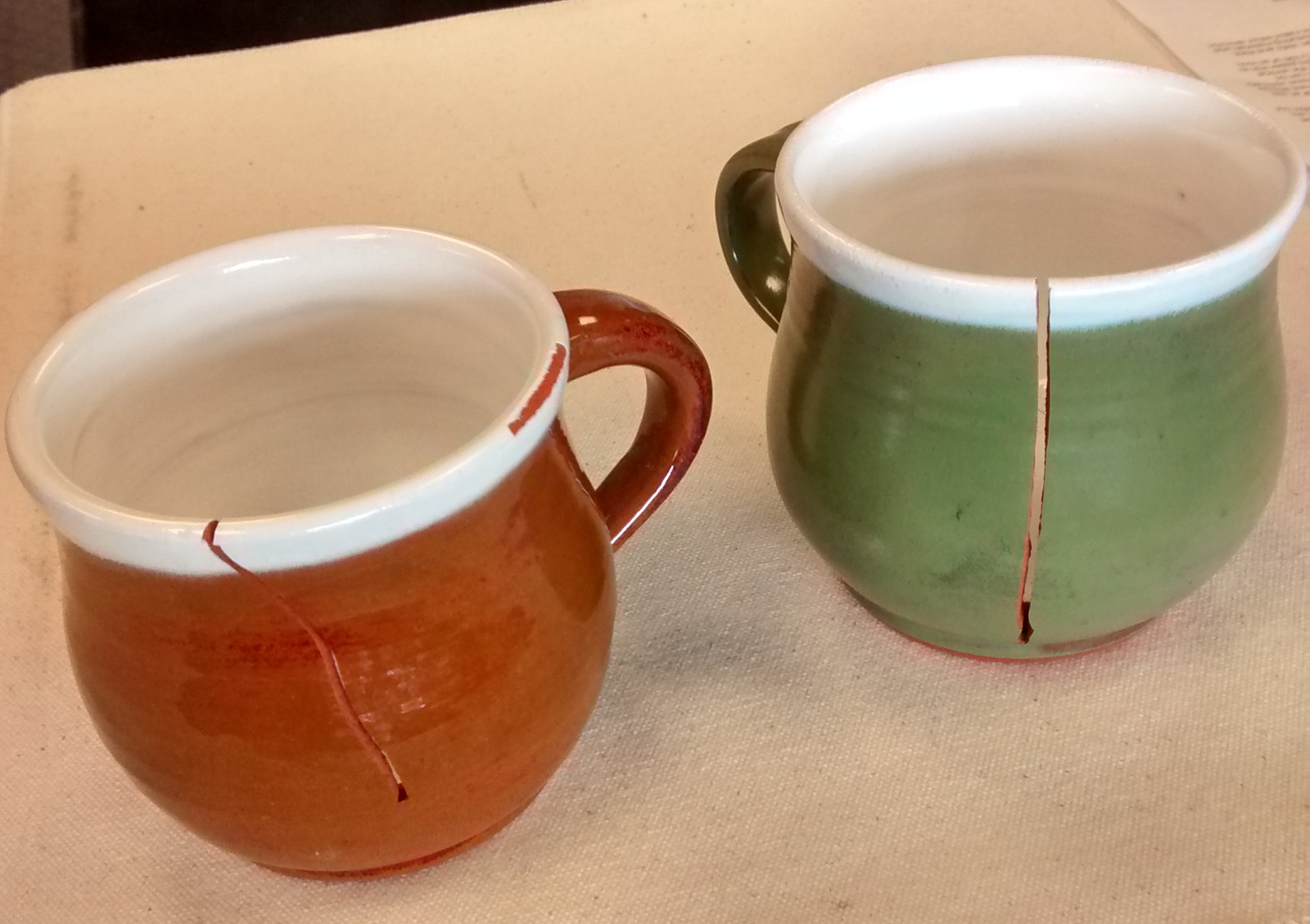Shivering on terra cotta is a red light not to ignore
insight-live.com/glossary/34">Low fire terra cotta mugs have cracked. Why? The white glaze is under compression, its thermal expansion is too low (that is why it is also shivering off the rim). As the piece is cooling the kiln the thick layer of white glaze first solidifies. As cooling proceeds the body shrinks (thermally) at a faster rate than the glaze. The puts the glaze under compression and stretches the body. As some point (e.g. last stages of kiln cooling, a thermal stress during use) the body cracks to relieve the stress (notice how the white glaze is pushing the cracks apart). Neither the body or glaze are at fault, in this case they are simply made by different manufacturers and are thermal expansion incompatible. One solution would be to mix it with a white glaze that is crazing (the opposite problem). Or you could add some nepheline syenite to the glaze to increase its thermal expansion (maybe 10% by dry weight).
Pages that reference this post in the Digitalfire Reference Library:
Glaze Compression, Glaze shivering, Co-efficient of Thermal Expansion, Thermal shock

This post is one of thousands found in the Digitalfire Reference Database. Most are part of a timeline maintained by Tony Hansen. You can search that timeline on the home page of digitalfire.com.
